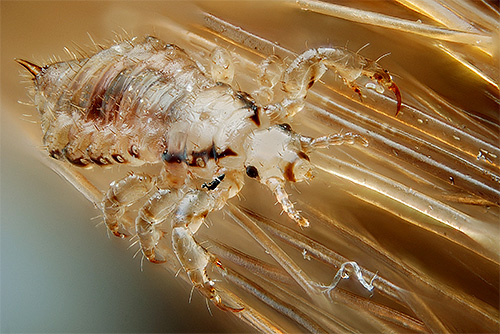
Head lice multiply very quickly. The whole life cycle of a head louse from the first egg to an egg laid by an adult female, under favorable conditions, is only 16 days. And with the most adverse, but still allowing the reproduction of these parasites conditions - about 30 days.
This means that within a month and a half or two months after infection, a whole population of insects will live on the human head, and after three months they will begin to pester the owner so much that they will cause pronounced manifestations of lice.
However, despite the short life expectancy, how lice multiply, attracts the attention of scientists. Over its transient life cycle, lice go through several stages of development, each of which has many features and deserves separate consideration.
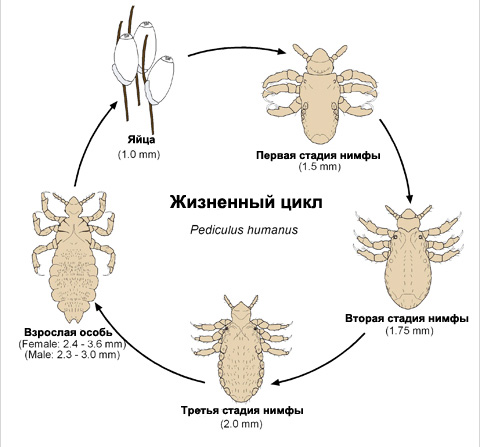
The high rate of reproduction of lice only adds variety and plenty of interesting details in this process.
It is interesting
Reproduction of lice occurs almost equally in different species and forms of the same species. For example, the number and duration of each stage of lice development and the duration of the head, wardrobe and pubic lice are almost the same, differing only in some of the smallest details. Therefore, in describing further how lice reproduce on the head, we will only make small notes about the features of this process in other species.
Head louse is one of two forms of lice that is common only in humans. The second form - the creation of an exclusively human civilization - a louse worn, adapted to life on clothes and food on the skin of a person who dresses in contaminated things.
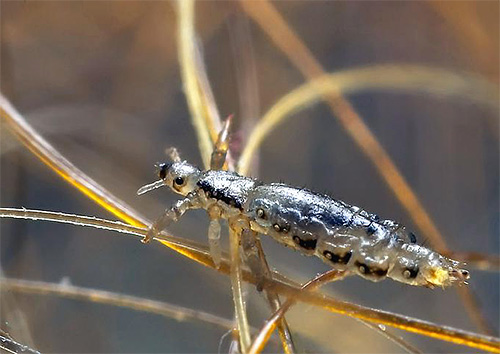
But the pubic louse is a completely different form, although due to similar conditions of existence, the life cycle of the lice of the pubic is almost identical to that of the head ones.
Lice life cycle
Lice belong to insects with incomplete transformation. This means that the life cycle of the development of head lice does not include the stage of a typical larva,which in other insects is usually very different in appearance and feeding method from adults.
The adult female mates during the first day or two after the last larval molt, and after a few hours begins to lay eggs. Since the source of food (man) is always “with lice,” they do not have developmental delays that are characteristic of other parasites due to the hunger strike.
It is interesting
Lice, in principle, do not know how to starve. Each insect should eat every few hours, and in the absence of food for two or three days the louse dies. Pubic louse can starve a maximum of 10 hours.
Lice eggs are attached to hairs at different distances from the hair root. Each egg is put on a sticky cap, due to which it is glued to the hair tightly enough. This design of the egg and cap is called a nit. When viewed with the naked eye, it resembles a simple white dash on a hair, but when examined under a microscope, it is a neat handbag that fits tightly around the hair.
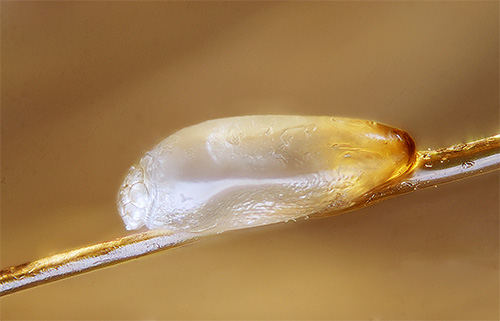
From the nits, the larva of the first age hatch fairly quickly. It is very similar to an adult insect, but has very small dimensions and an underdeveloped reproductive system.After the first saturation, such a tiny larva immediately sheds and turns into a nymph.
It is interesting
A nymph in zoology is called insect larvae, which differs little from adult individuals (imago). For example, cockroaches and grasshoppers have nymphs. But the butterflies and beetles in the development cycle present a real larva, absolutely no resemblance to the imago.
The rapid cycle of development of lice suggests the presence of only three molts and, accordingly, three nymphs. Molts are required by nymphs for the reason that the chitinous cover of their body is not elastic and cannot grow along with the soft tissues of the insect. Accordingly, when such a “suit” becomes small, the nymph changes it.
After the third molt, the nymph becomes an adult insect. Female lice every day lays 2-4 eggs - up to 140 in a lifetime.
It is interesting
Body and head lice are quite different from each other in details of the structure of the legs and some features of the body shape. If placed in a limited amount of lice of different forms, they can even multiply (interbreed), and after a few generations the differences between them will disappear.
Reproduction of lice on the head: the process under the microscope
Reproduction of lice in humans is replete with interesting details.For example, the process of hatching larvae from an egg is entertaining - an insect pierces the lid of its nits with its jaws, but cannot get out on its own. But at this time the larva is actively breathing, passing air through its digestive system and pushing it through the anus. Accumulating in the lower part of the nits, the air pushes the larva from the cap, and it falls on the scalp, where it begins to feed immediately.
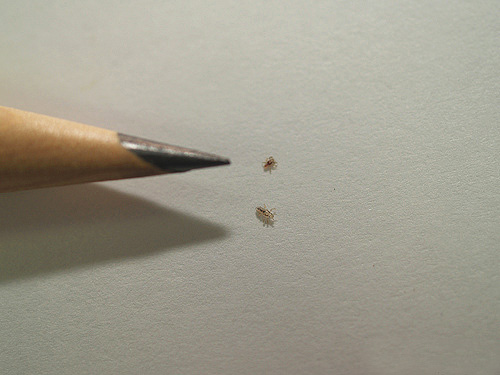
Different stages of lice development are characterized by different periods of existence:
- 5-8 days develops nit
- 1-3 days it takes the larva to turn into a nymph of the first age
- 5 days develops nymph of the first age
- 8 days nymph develops second age.
The adult louse lives from 30 to 42 days, and the recorded longevity record for these insects was 46 days. Life expectancy and narrowly defined lice breeding season due to the stability of the conditions in which head lice live at all stages of their development.
Females of lice mate with males already in the first hours after leaving the nymph. One copulation is enough for them to fertilize all the eggs in the body. Then every day the female lays several eggs.In head lice - about 2-4 eggs per day, in the pubic - 1-3 eggs, in the case of lice - up to 10.
Accordingly, in my life:
- head lice female lays up to 140 eggs (usually about 80)
- female pubic lice leaves about 50 eggs
- female louse lays up to 300 eggs.
The egg itself in the genital glands of the female is smeared in a sticky secret, part of which is removed from the oviduct before the egg. This secret forms the shell of the nits, due to which it is attached to the hair.
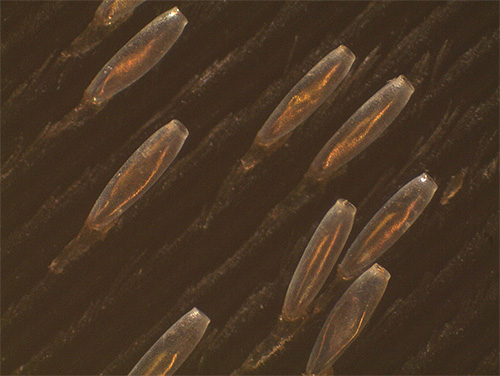
After laying the eggs, the secret hardens and provides a reliable attachment of the eggs.
The video below clearly demonstrates how lice breed.
Interesting shots: about lice, their reproduction and the life cycle as a whole
In the overwhelming majority of cases, the life cycle of lice takes place on the surface of the head of the same person. However, in the case of close contact of people with each other or when combing, the insect may fall on the head of another person and give rise to a new population here. This is the transmission of lice.
Conditions under which lice breed
Propagation of head lice occurs in fairly limited temperature ranges. Their nits stop developing at temperatures below 22 ° C and above 45 ° C.The optimal temperature for the rapid course of the life cycle of a head louse is 30-31 ° C.
Head lice breed as quickly as possible with a large number of them on the head, when females and males do not have to search for each other for a long time. These parasites are species-specific, that is, they cannot infect another host besides man and some monkey species very close to him.
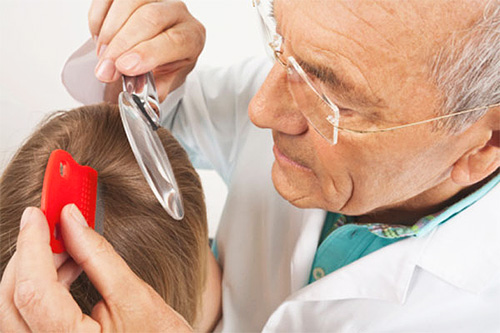
It is believed that with the greatest speed lice breed in places where large numbers of people live together. They were a great misfortune in times of war and people living in barracks.
Reproductive peculiarities of different types of lice
The development cycle of head lice is almost completely identical to that of the pubic and dress lice. The differences here are only in fecundity (the clothes louse is much more fruitful and, accordingly, reproduces faster, the pubic louse lays fewer eggs) and the ability of the louse to multiply in different parts of the body. For example, the pubic louse can parasitize on the head in children, but the head one does not even go to the beard in men.
The breeding patterns of head lice have no effect on how to combat it.Like other parasites, the louse is poisoned by insecticide-containing shampoos, and with regular shaving of the head bald insects disappear by themselves, not being able to lay eggs and washing away during water procedures.
Video: the potential danger of lice and methods of dealing with them

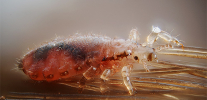
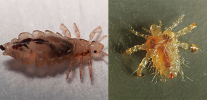
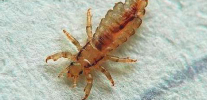
thanks for the information
Thanks for the information.
Interesting!
Thank! I learned a lot of new and interesting things!
Everything is very interesting and even a lot of useful information. But one question is in my head: where do they come from right from the beginning? Would love to find out. I have never had lice myself, so I can't imagine what it is like. My daughter's niece had lice, and decided to climb sites and find out their origin. Everywhere they write that from another person, and where did they come from? Do not understand. Thank you in advance.
From the dirt.
Just on a clean head lice soon and go (((
Taken from the dirt. Often parents don’t look after their children, especially parents whipping, and this is the result.
At the moment it is rather the trouble of wealthy families. Children at school lend each other things, change, unaware of the danger. My girls picked up this stuff 3 times. 1 time at school, the boy in the next classroom for about a year went lousy, simply because his mother had poor eyesight and she could not process it normally.Although I could elementary shave him nakedly, but no, I myself suffer, the child suffers and everyone else suffers. The nurse from the school told me about it in secret, I was shocked, I need to fire such doctors. As a result, the boy was sent for processing to the KVD. The second time we picked up at the same school, also a boy, but the other one came from sports camps from Italy. Believe me, scourging parents cannot afford this.
I again with shampoos, comb, with iron throughout the apartment, even stroked plush toys and carpets. By the way, the hair of my beauties is lower than the priests, i.e. meter length. Now I am again with irons and shampoos ... I went to the water park a couple of times (by the way, also not cheap) - and here is the result ... You can also pick up in the store, measuring things that the infected person measured to you, sitting in the cinema on upholstered chairs, headrests every time no one disinfects, in school in the locker rooms, in physical education classes (children tumble on the mats, that's enough). The list is endless. The main thing in this business - time to see and take action. It's good that I'm on vacation now and I have the strength, and so I would hang myself ... I had a thought to cut their heads off ((
Tell me, why do we need an iron?
What nonsense? Dirty all.
Thank!
I am terrified what they are.
Yeah!
Not from dirt. My daughter went to school, and it began. Because of these lice did not give it to the garden. In all the gardens there.
From dirt - lol. Where, then, are they in the gardens?
Fu, hate to hear about them.
I also encountered this problem - my daughter became infected in the kindergarten. That's terrible.
Well, then the cockroaches from the dirt (lice are transmitted only from an infected person, and they can just fall on you in the transport, when someone with a lot of lice bent over the person sitting).
I'm terrified, I came home from school - I found 100 eggs. Nightmare, now I hate. There is food, I remember them, from them my whole head and throat in acne ...
100 eggs is either 20 days one female, or just a bunch of females in a couple of days. Filter your surroundings.
We do not go to kindergarten, walked on the playground - and everything is ready. Now a headache, what to do and how to be ...
This is kapets.I sent the child to the village. She came after her in three weeks, got into her head and ... Mom sees poorly, but she suspected that something had started. From children, from whose parents in childhood I caught. They have this stability. Mom told me when she was still working in the garden: their father was small, her hair was short and itchy. They took a comb and decided to scratch - they only counted 60 pieces, and then lost count. It's hard!
It really is just a disaster! In July of this year, a granddaughter from the kindergarten brought lice. We noticed two adults at once, and after processing and checking for a week, they calmed down after experiencing serious stress (as there are two girls in the family and a daughter with long hair). Less than 3 months - the story repeated. The daughter says that in the kindergarten there are children from a large Armenian family, and completely wealthy parents. From experience: it is not enough to process the head, although the means are effective, it is necessary to comb out all the nits with a frequent comb. It is also possible to warm up the hair with ironing curtain for prevention.
I am very neat, my daughter always goes clean, but from any stress she gets lice. Help advice, already completely tortured. I pickle them, choose, but now she has appeared a second time.Help advice.
Dip the head with dog-like lice (like Bars) - forget about the lice once and for all! ) Health to you and your daughter.
I couldn’t cure my half a year myself, but the doctors themselves gave me advice in the hospital, seeing my grief ... They have no right to write out dog drops, but they can hint))
Can you give more details? How exactly to drip, how many drops, one-time drip?
Thank. I learned a lot for myself. Son brought from school lice. Shame to say to someone. What kind of doctors at school do not check children ...
That's horrible! My son did not have lice in the kindergarten, now he goes to school - and in half a year he brought 2 times ((
Got to the hospital, infected with this infection. What do I do not mind. Maybe someone knows the right way? Help.
The pharmacy sells funds for pediculosis, choose the one with the comb.
Chemerichnaya water, hot hair dryer, iron and comb to help you. Bought three different types of shampoos, sprays, which cost under a thousand. In short, there is only to process and comb.